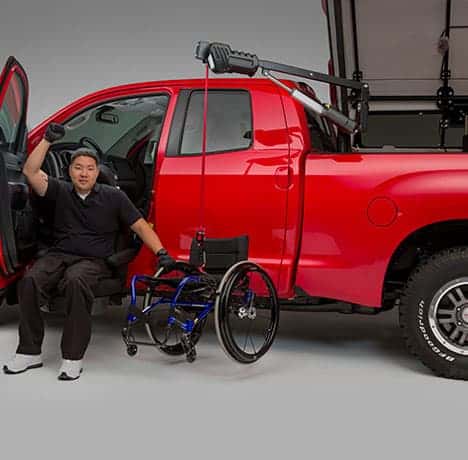If consumers take a look at how the Americans with Disabilities Act has improved mobility, it is hard to ignore the increase in autonomy, freedom, and quality of life impacted. It is also difficult to overlook the modifications merited due to the changing times; evolving interpretations of devices and diagnoses merit reconsideration and reinterpretation to maintain equality and autonomy for every American.
We’ve come a long way, baby… That cliché seems to aptly sum-up how the country has evolved in its views and accommodations of those with physical disabilities. Consumers are gaining entry to places, job-sites, and public areas that previously would have been challenging at-best, but often impractical to access. However, the law isn’t always as cut-and-dry as one may believe, with changes in aids, diagnosis, and demographics emerging. With the number of individuals using mobility devices rising, it makes sense to revisit the Americans with Disabilities Act, or ADA, of 1991 to see just how far the country has come.
Take a look at how the Americans with Disabilities Act has improved mobility:
The Americans with Disabilities Act improves access and protects the liberties of those with disabilities, preserving their autonomy, rights, and entry to public spaces. This Act also mandates specifications that allow easy access for wheelchairs, scooters, walkers, and other mobility aids and equipment which, previously, was not enforced by law. This assures citizens that they will have use and utility of rented homes, access to public restrooms, and the ability to use, enjoy, and traverse spaces that could pose obstacles for those using mobility aids or devices. The law does more than that however by providing a legal precedent for individuals living with disabilities, allowing them the same entry, access, and life of those that do not require accommodations.
Modern Modifications
Twenty years after the Americans with Disabilities Act was enacted, revisions were made to specifically address the needs of citizens that use modern mobility aids. With design changes and increased offerings in mobility solutions, the original accommodations asserted by this Act was modified to encompass and protect individuals that use scooters, wheelchairs, or other adaptive equipment, aids, and devices. For instance, the original legislation was enacted before items like seg-ways appeared on the scene; the Segway is used by many with mobility issues to improve access and increase mobility. In fact, the somewhat trendy Segway is being lauded as a personal assisted device, embraced widely by consumers and protected by the law.
Expanding Definitions
Just as the need to expand on the rights of those with disabilities has evolved, so has the definition of a disability. Mental health issues plague millions of Americans in a daily struggle that can be debilitating and stigmatizing; therapeutic aids such as emotional support animals have been emerging more widely, which further complicates interpretation of the law. Just as potential landlords must comply with door width and access features, many businesses are faced with accepting support animals in their ‘no pets’ properties to comply with the ADA. A subject of wide-spread legal debate and litigation, there is still ambiguity in the laws that leaves room for confusion and conflict.
Equal Access
It would be impossible to list all of the people and protections afforded by the ADA; in essence, it preserves the right of access to anyone with a disability that could provide obstacles in accessibility. Furthermore, the ADA offers very specific protections for individuals with disabilities at work. Accessibility hurdles at work that could prevent someone with a disability in their job performance, like stairs, handicap-accessible bathrooms, and visual cues, are mandated and asserted by this very comprehensive piece of legislation.
Improving Technology
Technology is making it easier for individuals with mobility impairments or disabilities to compete in today’s job market. From telecommute positions to meetings by Skype, technology is at the forefront of accessibility for all. This extends to mobility aids and the merchants offering these to their consumers; ask about high-tech features and devices to improve everyday living.
Community Commitment
Improving access and quality of life for those with disabilities requires a community commitment; continued efforts to update and modify existing facilities, public places, and serving as a role-model for others falls to each and every American. The Americans with Disabilities Act of 1991 paved the way for individuals with impairments or limitations to access the same spaces and places as those without disabilities. This legislation calls to action area groups, organizations, municipalities, employers, and citizens in an effort of protecting the rights, improving the accessibility, and maintaining the autonomy of disabled Americans widely, including those that utilize mobility aids.
Preserve your autonomy, or the freedom of someone you love, with mobility aids and devices. The experts at Pacific Mobility are here to help you assess and evaluate your needs while offering options to suit your distinct lifestyle, living situation, and budget. They can offer insight and information pertaining to the ADA laws and guidelines that will preserve and protect your accessibility, as well as your rights.
President, Husband, Father, Grandfather Graduate of UC Davis- Bio Sci Major- Go Aggies! Jeff has extensive experience in all of Pacific Mobility’s products and services, and specializes in accessibility products as well as stairlifts, ceiling lifts and custom wheel chairs. His hobbies include spending time with family, gardening, mountain biking, exercising and off road motorcycle riding.
24 years as Owner/President of Pacific Mobility Center – selling, installing, and servicing stairlifts, porch lifts, ceiling lifts, pool lifts, handicap ramping, specialty wheelchairs, scooters, power wheel chairs, and other power mobility devices
Certified Environmental Access Consultant since 2008
Licensed General Contractor since 1998
Certified Aging in Place Specialist since 2016
Board Member for Home Access Professionals
Member of Association of Members of the Accessibility Equipment Industry (AEMA)




